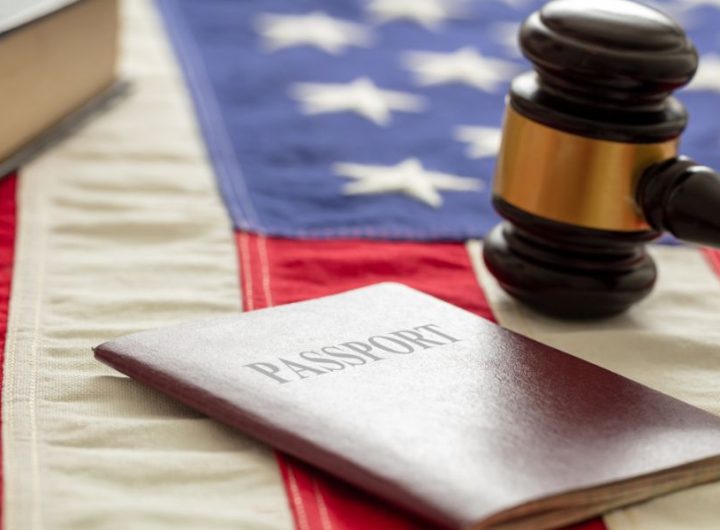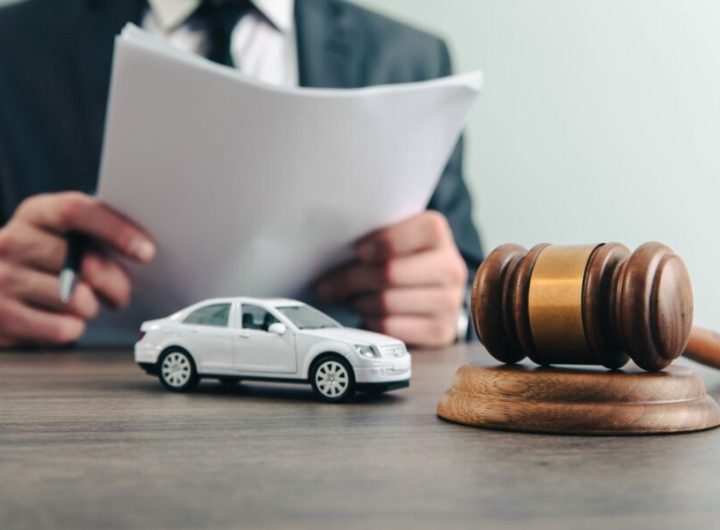
Serious accidents upend routines in an instant, on the 405, along Pacific Coast Highway, at a job site near the Port. When injuries follow, people need more than forms and phone calls: they need a plan. Personal Injury Lawyers Long Beach focus on building that plan from day one: investigating, protecting clients from insurance tactics, and pursuing full compensation through settlement or trial. This article offers a clear overview of how these cases actually work in Long Beach, from common accident scenarios to negotiation and trial preparation. If they’re weighing next steps, readers can, frankly, Check it out and understand what experienced counsel brings to the table.
Common accident and injury cases in Long Beach explained
Long Beach sees a mix of dense urban traffic, port freight movement, and active coastal recreation, so injury patterns are diverse, and the legal strategies are too.
Frequent case types
- Vehicle collisions: Crashes on the 710, 405, and surface streets like PCH often involve disputed liability, multi-car pileups, or commercial vehicles. Trucking collisions tied to port logistics can raise federal safety regulations and corporate policy limits.
- Rideshare, motorcycle, bike, and pedestrian incidents: With more bike lanes and crosswalk traffic near Downtown and Shoreline Village, visibility and right‑of‑way issues are common. Rideshare claims require navigating layered insurance coverage.
- E‑scooter and micromobility injuries: Defective devices, poor maintenance, or roadway hazards may shift responsibility among operators, municipalities, and manufacturers.
- Premises liability: Slip‑and‑falls in grocery stores, trip hazards in apartment complexes, and negligent security at venues can all lead to significant orthopedic and head injuries.
- Dog bites and animal attacks: California imposes strict liability on owners in many circumstances.
- Boating and watercraft injuries: From Alamitos Bay to the open water, operator negligence and rental company practices come into play.
- Wrongful death: Families can pursue claims for the loss of a loved one, with damages that account for financial support and the profound human loss.
Local legal wrinkles that matter
California uses pure comparative negligence, so a plaintiff’s compensation can be reduced by their percentage of fault, but not eliminated. The general statute of limitations for personal injury is two years from the date of injury, while claims against public entities (for dangerous roads or city negligence, for example) typically require a government claim within six months before a lawsuit. Personal Injury Lawyers Long Beach track these deadlines and identify all potentially responsible parties early, preserving evidence before it disappears.
How attorneys support clients in negotiations with insurers
The negotiation phase is where cases are won or set up for trial. Insurers move quickly: injured people need a buffer and a strategy.
What strong representation looks like
- Controlling communications: Attorneys stop harmful recorded statements and handle adjuster calls so clients can focus on treatment.
- Building the demand: They compile medical records, radiology, wage documentation, and witness statements into a cohesive liability and damages package. Photos, black‑box data in vehicle cases, and traffic cam footage can tip the balance.
- Valuation grounded in reality: Experienced lawyers benchmark verdicts and settlements in Los Angeles County for similar injuries, accounting for venue, policy limits, and comparative fault.
- Time‑limited policy‑limits demands: In serious cases, a properly supported, clear, and reasonable deadline to settle for policy limits can position the insurer for bad‑faith exposure if it unreasonably refuses. That leverage matters.
California’s Fair Claims Settlement Practices Regulations set timing expectations for insurers to acknowledge, investigate, and accept or deny claims. While those rules don’t guarantee a payout, good lawyers use them to keep files moving and document unreasonable delay. They also identify and coordinate coverages, liability, med‑pay, and uninsured/underinsured motorist, to avoid gaps and maximize recovery.
Bottom line: Personal Injury Lawyers Long Beach manage negotiation pressure, present compelling evidence, and won’t hesitate to file suit when the numbers don’t reflect the harm.
Trial preparation for complex personal injury lawsuits
Most cases settle. The best settlements, but, are often the result of credible trial readiness.
Building a trial‑ready file
- Early investigation: Site inspections, vehicle downloads, and preservation letters to at‑fault parties prevent spoliation. Subpoenas secure key records.
- Discovery and depositions: Lawyers question defendants, eyewitnesses, treating doctors, and corporate representatives under oath, locking in testimony and exposing contradictions.
- Expert witnesses: Accident reconstructionists, biomechanical engineers, life‑care planners, and economists translate complex facts into clear, jury‑friendly opinions.
- Demonstrative evidence: Medical illustrations, 3D reconstructions, and day‑in‑the‑life videos help jurors visualize injuries and future care needs.
Courtroom strategy in Long Beach
Cases typically run through the Governor George Deukmejian Courthouse. Trial teams craft case themes, draft motions in limine to exclude unfair evidence, and prepare witnesses to testify with clarity and confidence. Jury selection (voir dire) focuses on uncovering biases about pain and suffering damages, corporate responsibility, and comparative negligence.
Damages are organized into economic (medical expenses, lost earnings, future care) and noneconomic (pain, suffering, loss of enjoyment). Punitive damages can be sought in egregious misconduct cases, though they’re rare. Throughout, attorneys align the proof with California Civil Jury Instructions (CACI) so the verdict form matches the story the evidence tells.
The paradox of trial prep: the more convincingly a team readies a case for verdict, the more likely a fair settlement becomes.
Workplace accidents and their role in Long Beach claims
Industrial and construction activity around the Port of Long Beach, healthcare campuses, and aerospace facilities means more on‑the‑job injuries than in many cities. Workers’ compensation covers medical care and a portion of wages regardless of fault, but it usually bars suing the employer directly. That’s not the end of the story.
Third‑party avenues
If someone outside the employer contributes to a worker’s injury, an equipment manufacturer, a negligent subcontractor, a property owner, injured workers may bring a separate personal injury claim against that third party. Examples include a crane malfunction caused by a defective component or a delivery driver hurt by a property’s unsafe loading dock.
Longshore and harbor workers often fall under the federal Longshore and Harbor Workers’ Compensation Act, but third‑party negligence claims may still be available alongside those benefits. Personal Injury Lawyers Long Beach coordinate the two tracks, manage lien rights (workers’ comp has reimbursement claims), and pursue full damages like pain and suffering that workers’ comp doesn’t pay.
Prompt investigation is critical on job sites. OSHA reports, incident logs, and contractor agreements can make or break liability. As always in California, the general two‑year statute for injury claims applies, with shorter deadlines for public entities.
Settlement processes that shape compensation outcomes
A “settlement” isn’t a single event, it’s a sequence of choices that add up to a number.
Key stages
- Demand and counter: After treatment stabilizes or future care is well‑documented, counsel serves a detailed demand. The insurer counters. Lawyers refine the damages model and liability arguments.
- Mediation: A neutral mediator can help bridge gaps, especially in higher‑stakes cases. Preparation, updated medicals, expert letters, and visuals, drives results.
- Offers to compromise: California Code of Civil Procedure section 998 allows cost‑shifting if a party fails to beat a reasonable pretrial offer at trial. Strategic 998 offers can encourage settlement.
- Lien resolution: Health insurers, Medicare, or workers’ comp may assert reimbursement rights. Experienced firms negotiate these aggressively so more of the gross settlement becomes the client’s net recovery.
- Payment structure: Lump‑sum payouts are common, but structured settlements can provide tax‑advantaged streams of income for minors or clients with long‑term needs.
What influences the number
- Liability clarity and comparative fault
- Injury severity and permanency, including future care
- Policy limits and collectible assets
- Venue and jury trends in Los Angeles County
- Credibility of experts and demonstrative evidence
Clients often ask about timeline. Straightforward cases can resolve in a few months: complex liability or catastrophic injury matters can take a year or more. Rushing usually benefits insurers. Seasoned negotiators pace the process to the evidence and the client’s medical trajectory.


 Uncovering the Realms of Property Division During a Divorce Case
Uncovering the Realms of Property Division During a Divorce Case  Estate Planning After Divorce: Protecting Your Financial Future in Boston
Estate Planning After Divorce: Protecting Your Financial Future in Boston  The Role of Evidence in Winning a Car Accident Claim in Atlanta
The Role of Evidence in Winning a Car Accident Claim in Atlanta  Exploring the EB-5 Investor Visa Program and Immigration Pathways in 2025
Exploring the EB-5 Investor Visa Program and Immigration Pathways in 2025  Workers’ Compensation Rights and Employee Protections in Washington State
Workers’ Compensation Rights and Employee Protections in Washington State  Smart Strategies a Harlem Personal Injury Lawyer Uses to Maximize Car Accident Settlements
Smart Strategies a Harlem Personal Injury Lawyer Uses to Maximize Car Accident Settlements